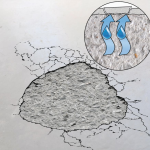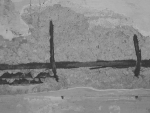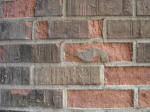Spall is a term used in engineering to describe the chips or fragments of a material that is broken off a larger object. The process of spalling (or spallation) describes the surface failure that occurs when a material such as concrete, brick, or limestone is subjected to excess moisture, corrosion, weathering, and much more. [a]
The most common source of spalling in brick, for example, is from excess moisture in which water enters into the brick material causing pieces of it to crumble. Causes of excess moisture may include consistent, heavy rainfall coming into contact with outdoor brick, or dark, damp areas such as basements in which the humidity and also salt will affect the walls. [b]
Besides environmental factors, poor installation also induces spall to form in concrete or limestone such as through structural overloading of the stone or not taking care to have the proper mixture of ingredients while pouring the concrete. [a]
Spalling, at a low level, is mainly a cosmetic problem but it can lead to structural damage if not dealt with immediately. If left untreated, damage can occur to the reinforcing bars within the concrete. Also, large enough fragments could fall off which could lead to serious consequences. [c]
Preventing spallation is usually done at the outset of mixing the concrete, by using air-entrained concrete, curing well, and making sure to apply a water-repellant sealer after the slab is cured. The water-repellant sealer is probably the most essential ingredient needed to prevent spallation. After the concrete is done though, one can use a Concrete Treat as a sealer on outdoor and indoor concrete in order to prevent moisture from entering.[c]



